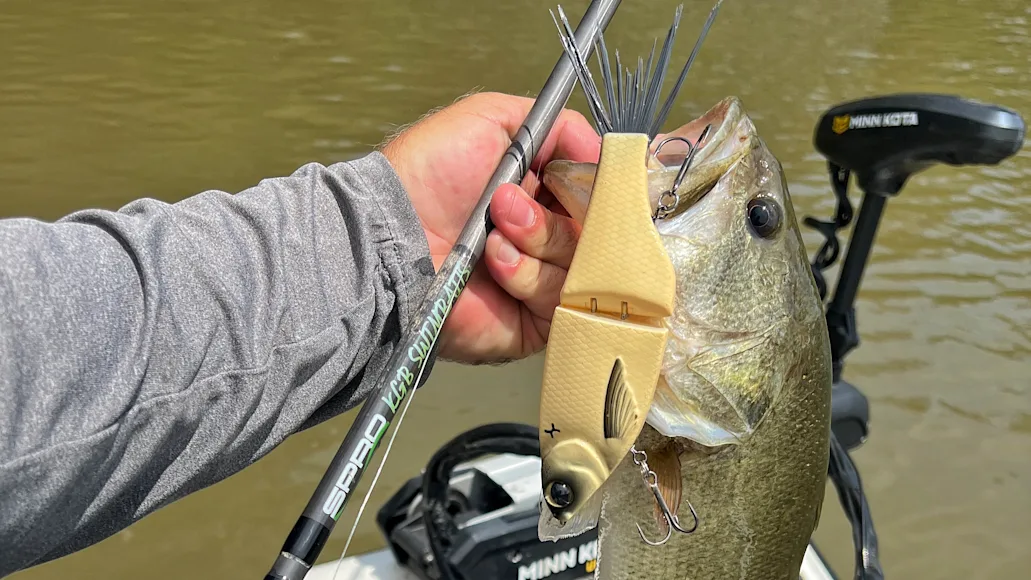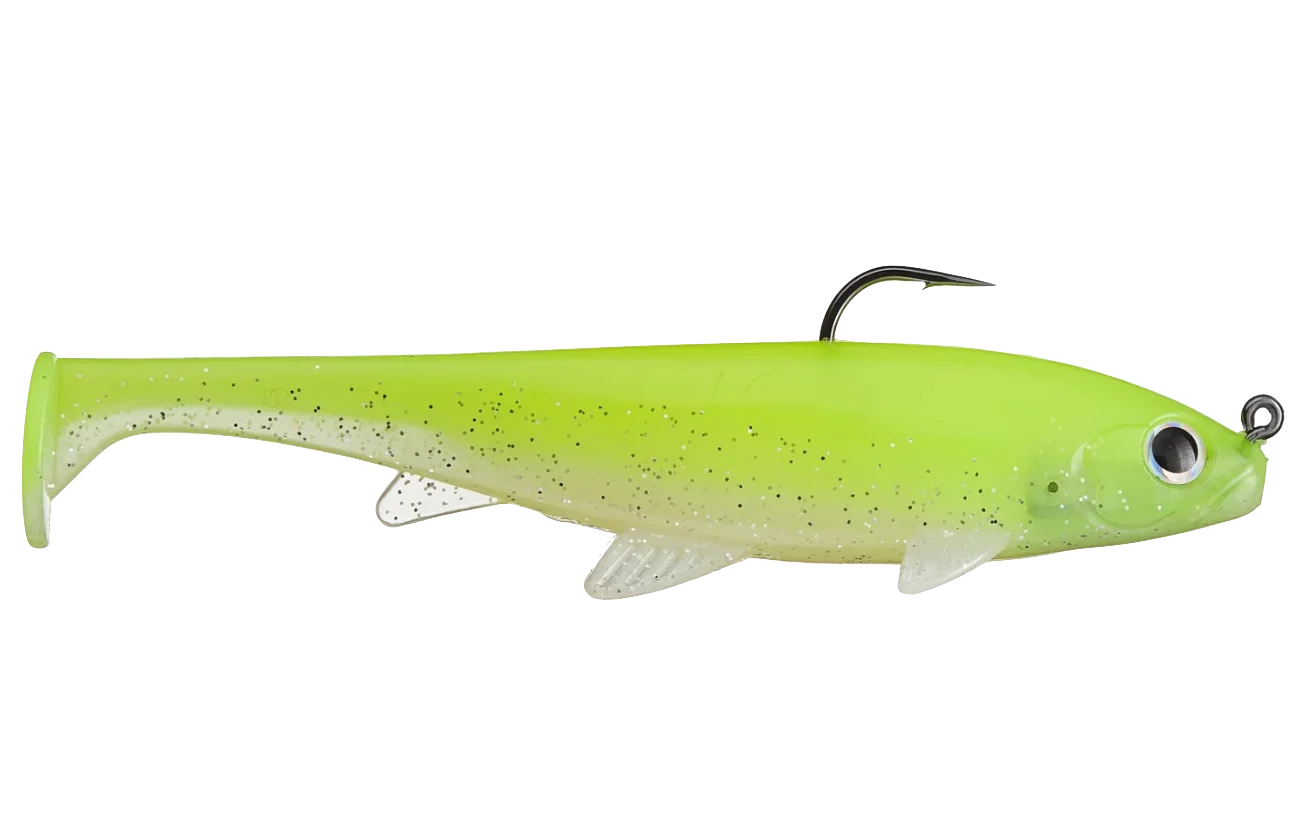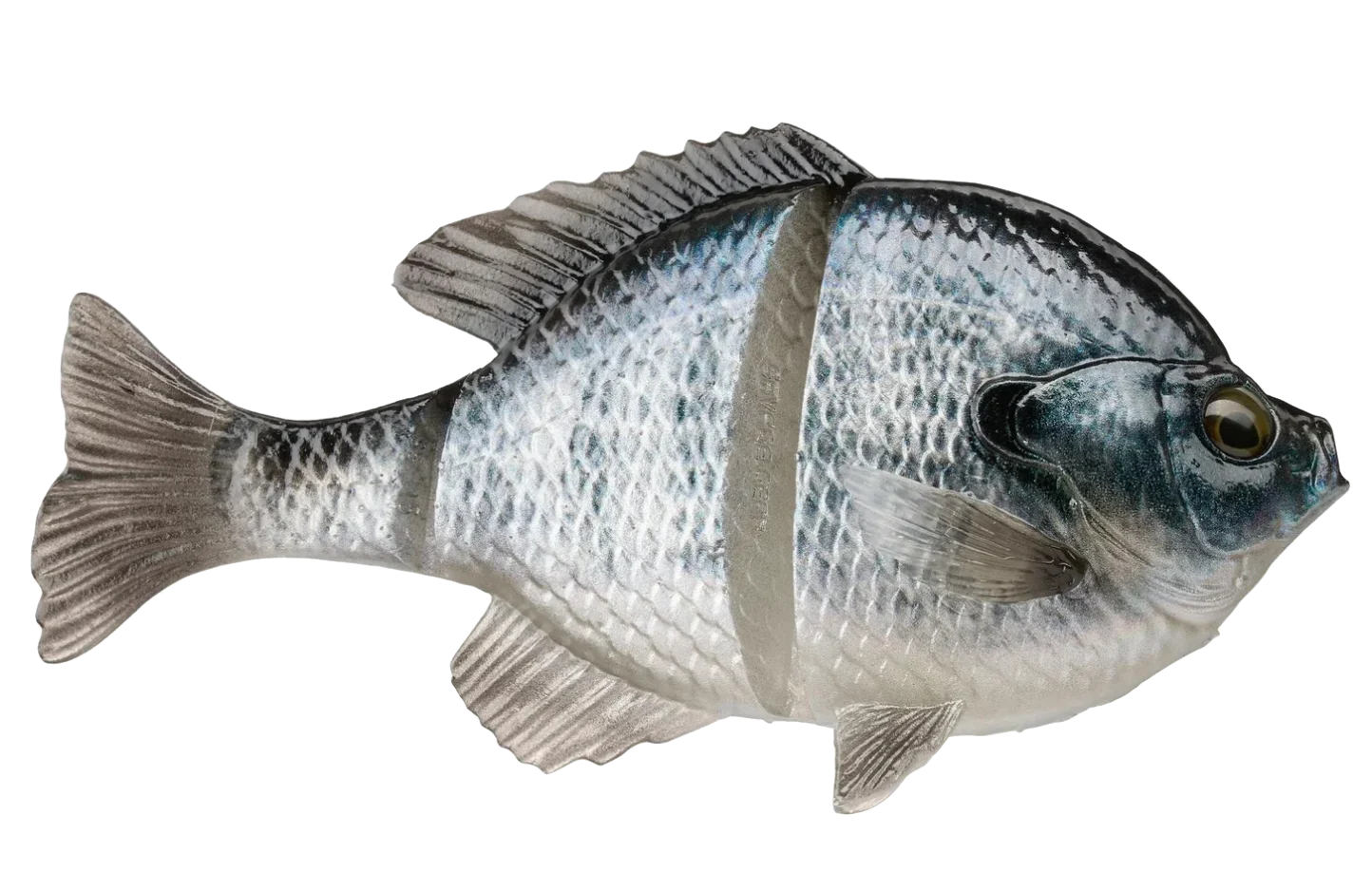We may earn revenue from the products available on this page and participate in affiliate programs. Learn more
Swimbaits are among the most effective and versatile artificial lures for bass fishing. With a wide variety of shapes, sizes, colors, and weights, there’s a swimbait that can be used to catch bass in mere inches of water out to 50 feet. In recent years, oversized swimbaits have gained popularity for targeting giant bass. The trend means that many lure manufacturers are producing more affordable big baits. Though there are still plenty of options in the small to medium size range.
You'll find some of our favorite big baits on this list, as well as other great swimbait options in every size, range, and style. To simplify our selections, we broke down our picks into different categories, including our favorite swimbait for 2025. So pick up one of these swimbaits and go catch you personal best bass.
Best for 2025: Savage Gear Live 3D Line Thru Bluegill
Best Glide Bait: Spro KGB Chad Shad
Best Harnessed: Berkley PowerBait Cull Shad
Best Small Jighead: Keitech Swing Impact FAT Swimbait
Best Hollow Body Paddle Tail: Basstrix Hollow Body Paddle Tail Swimbait
Best Top Hook: Huddleston Deluxe
Best Multi-Jointed: 22nd Century Triple Trout
How We Picked the Best Swimbaits
First, we evaluated each bait right out of the packaging, noting size, materials, and color options. Then I fished with each swimbait, using a variety of techniques in different situations. Many of these baits are longtime favorites, having years of experience fishing with them both in tournaments and for fun. We also tested multiple new swimbaits released in 2025. I took note of what each bait does best, with a focus on action, retrieve, rigging, realism, and durability. Of course, the overall success of each bait was also taken into account. Finally, I chose categories that cover some of the most popular ways to fish a swimbait and awarded a winner to each one.
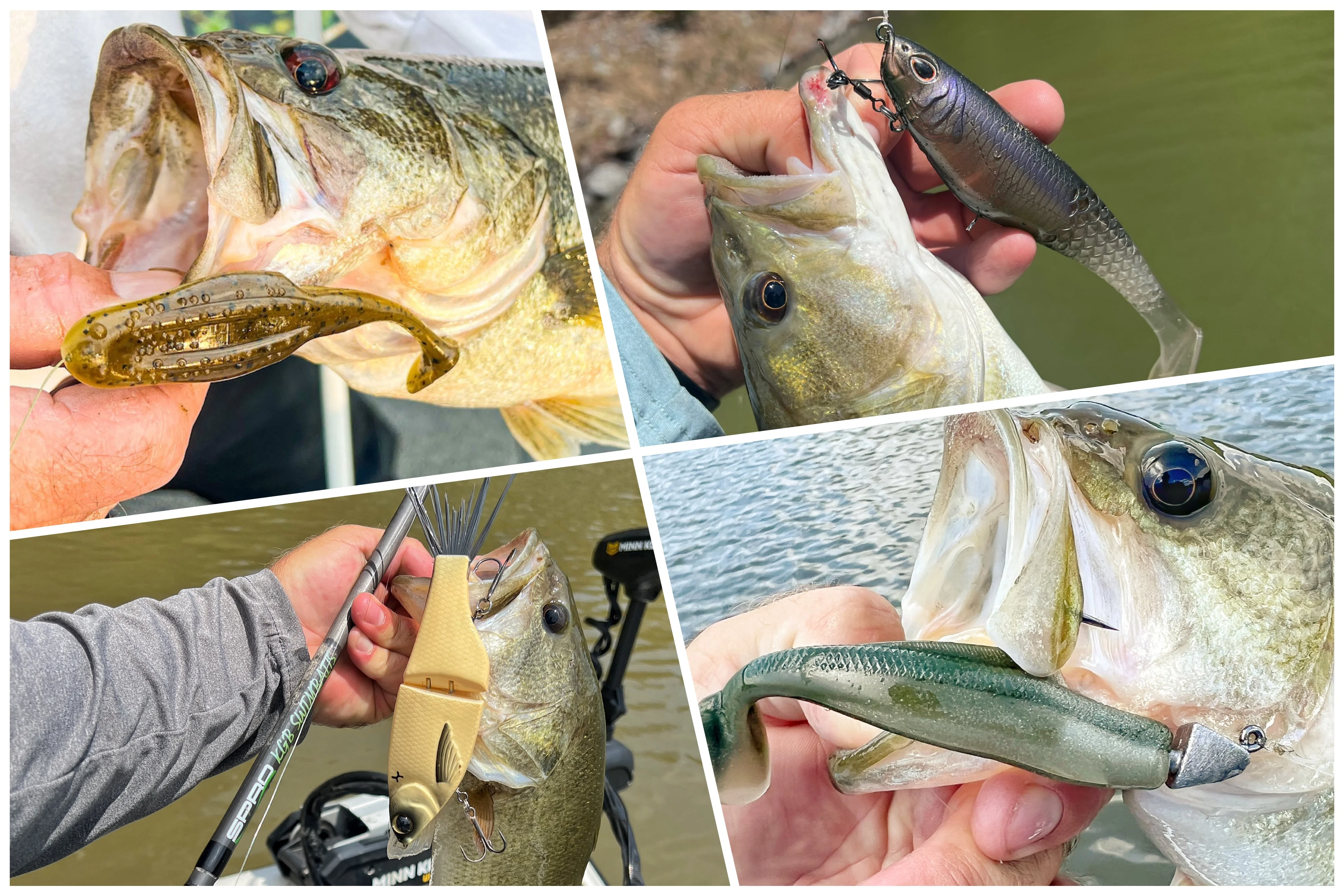
Best for 2025: Savage Gear Live 3D Line Thru Bluegill
Specs
Length: 6 inches
Weight: 3 ½ ounces, slow sink
Price: $24.99
I’ve never been a fan of line-through swimbaits—they can be a bit tricky to rig, awkward to fish, and have a poor hook-up ratio. With that in the back of my mind, I wasn't hopeful for the Savage Gear Line Through Bluegill, but boy was I pleasantly surprised. Released at ICAST 2024, this massive hunk of plastic looks pretty good out of the water, but its when you start to fish it that the bait truly comes alive. I've never fished with any bait that looks as realistic as this does in the water, from the action to the paint scheme.
The beauty of the line through design with a big bait is that the bait detaches from the hook when you get a fish on, which takes all the leverage away from a fish, making it hard to throw the hook. During my test, a 4 ½-pounder came out of a brush pile and crushed the bluegill. The first time the fish came up to throw the bait, the bait went sliding 10 feet up my line and the hook stayed pinned. You can slow reel it, twitch it, walk it, stall it, or burn it—this bait behaves and looks like a live bluegill no matter how you fish it.
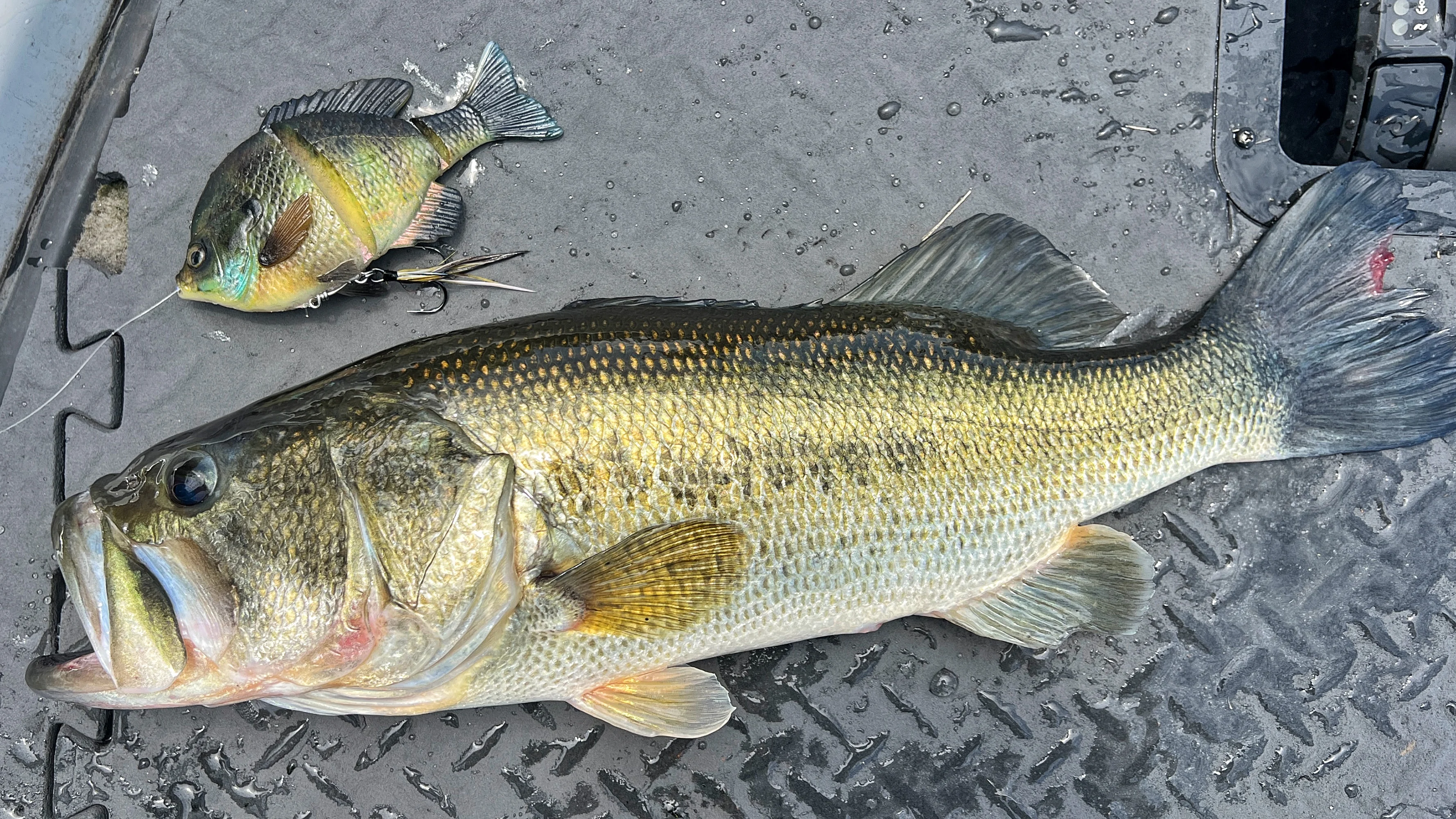
Best Glide Bait: Spro KGB Chad Shad
Specs
Length: 7.2″
Colors: Gizzard Shad, Threadfin Shad
Price: $59.99

In the glide bait world, there are several legendary baits like the DEPS 250, Roman Made Mother, and other cult classics. But most of these baits are unattainable for the common angler with some costing upwards of $500. For the average fisherman who wants to break into the big swimbait game, the Spro Chad Shad is your ticket. This bait was released a couple years ago and quickly became a best seller at Tackle Warehouse. It continues to garner fans thanks to its reliability and budget-friendly price tag. Though $60 is still significant for a single lure, this Chad Shad stacks up well against handmade glides that cost three or four times as much. Plus, it’s super versatile. You can chop this bait with quick turns of the handle, burn it in without it blowing out, and fish it slowly with lazy side-to-side sweeping glides. It is perfect for both recreational and tournament anglers looking to fish giant swimbaits.
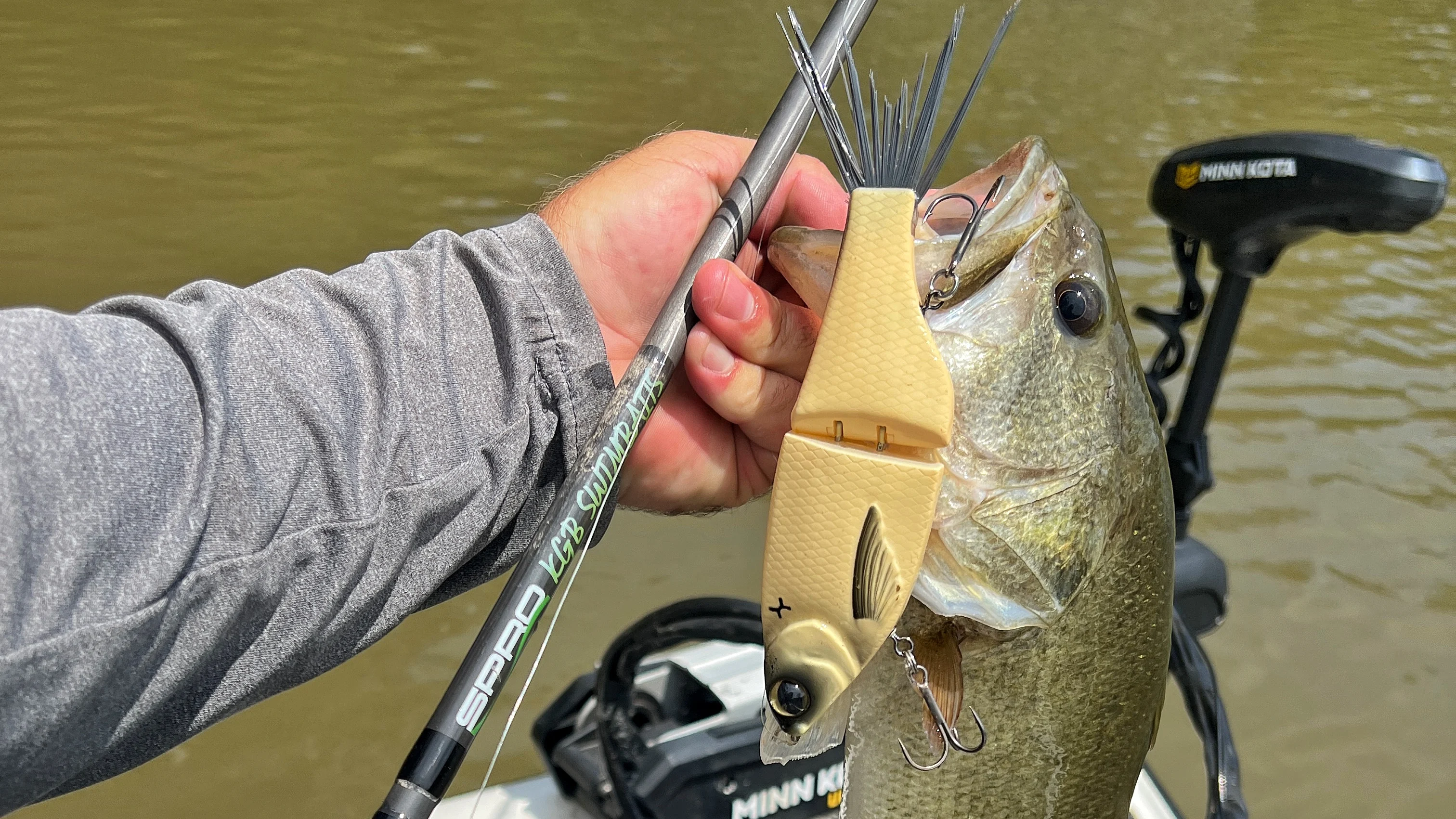
Best Harnessed: Berkley PowerBait Cull Shad
Specs
Length: 6″, 8″
Colors: Rainbow Trout, Electric Shad, Sight Flash, Hitch, Gizzard Shad
Price: $11.99 - $14.99

A harnessed swimbait is any soft plastic swimbait that has an internal harness, which is usually comprised of a wire carrying a treble hook below the bait and forming a line tie eye near the lure’s nose. The Berkley Cull Shad is the best harnessed swimbait you can buy. Due to its buoyancy, I like to fish it shallow, around docks and laydowns. The bait rides higher in the water column and can be fished slower without concern of snagging vegetation. If you’re planning to fish around bluffs and deeper points, the Cull Shad also comes with two predetermined hole locations where you can insert weights to get that bait down deeper.
Best Small Jighead: Keitech Swing Impact FAT Swimbait
Specs
Length: 2.8″, 3.3", and 3.8"
Colors: Tennessee Shad, Rainbow Shad, Electric Shad, Sight Flash, Blue/Chartreuse
Price: $6.49 per pack of 8
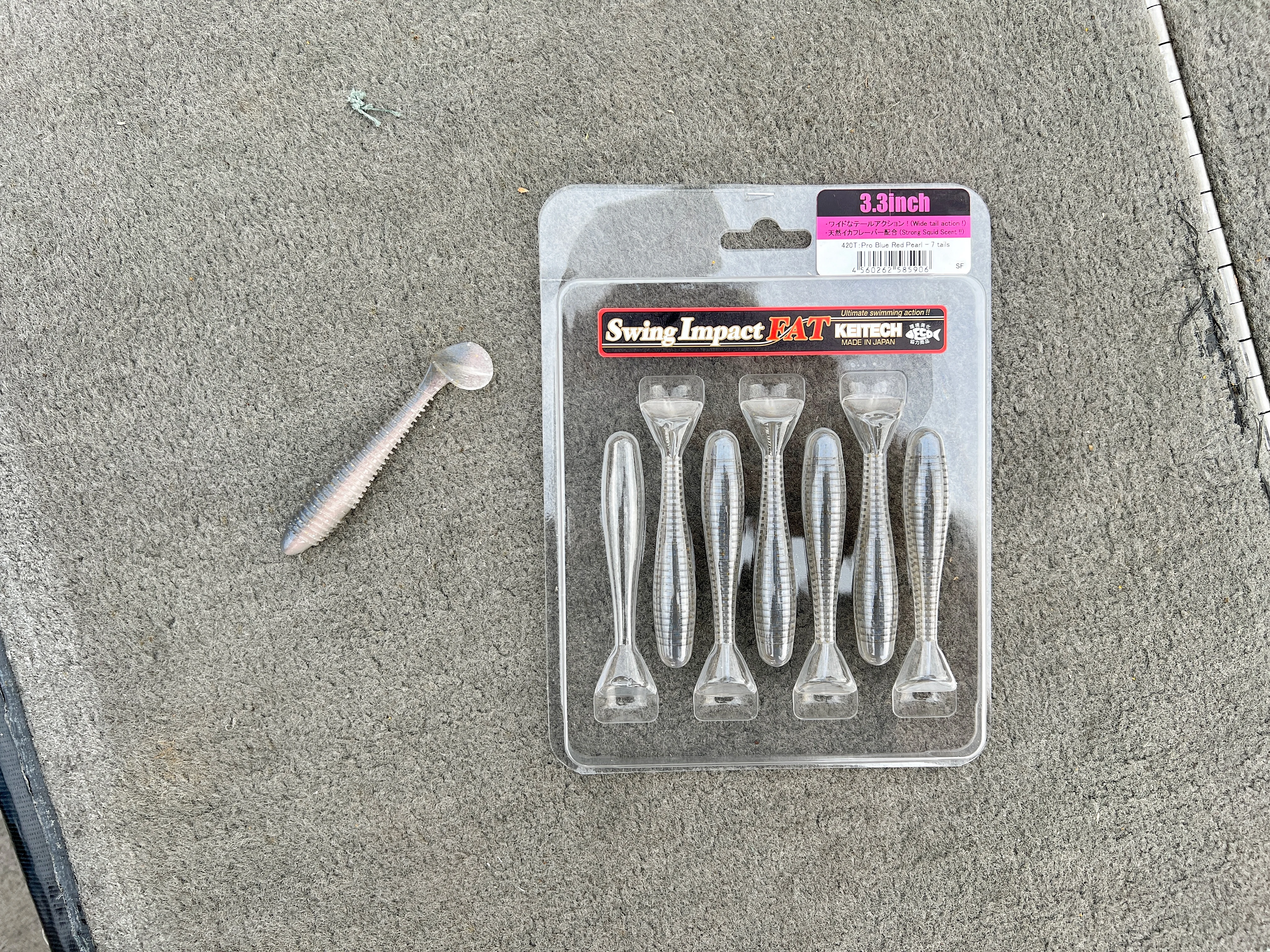
The Keitech Swing Impact FAT swimbait works best when paired with a light jighead. Anglers should use this setup when targeting suspended bass anywhere from a couple feet all the way out to 25 feet of water. These soft plastics come in three sizes and are one of the best options to use with umbrella rigs. The baits add weight to umbrella rigs and help get the entire setup get down in the water column. The action on these baits is excellent, and when fished together, they mimic a school of baitfish to perfection. The 3.3- and 3.8-inch versions are my favorite.
Best Hollow Body Paddle Tail: Basstrix Hollow Body Paddle Tail Swimbait
Specs
Length: 2.5", 3.5", 4", 5"
Colors: Electric Smelt, Live Bait, Shad Spawn, Pro Blue, TVA Killer, Blue Back Herring, plus 12 other options
Price: $6.99 - $14.99
While there are other great options in this category, the Basstrixx Hollow Body Paddle Tail is widely regarded as the first hollow-body swimbait. It is also the best in this category due to its action, durability, and propensity to catch giant bass. This bait can be rigged weedless and weightless for near-the-surface fishing. It can also be rigged with a belly-weighted hook for targeting water around trees, vegetation, and other cover. The wobbling, rocking, and tail-wagging action is what separates it from other swimbaits.
Best Top Hook: Huddleston Deluxe
Specs
Length: 6″
Colors: Rainbow Trout
Price: $33.99
These lures take me back to watching videos of legendary anglers like Butch Brown boat giants in the early 2000s. The most memorable being a 65-pound five-fish stringer caught by Brown with an 18-pound kicker. What did he catch it on? You guessed it, the Huddleston Deluxe. Top hook Huddleston swimbaits are designed to be fished along the bottom and up in the water column to target lethargic bass. The slow thump of the tail and light rocking action have the ability to draw attention from large bass looking for an easy meal. These baits come in 6- and 8-inch versions, but my personal favorite combines the tail of the 8-inch bait with the body of the 6-incher to form the “68”, which has an even slower and harder thump for its size.
Best Multi-Jointed: 22nd Century Triple Trout
Specs
Length: 6″
Colors: Rainbow Trout
Price: $33.99
Multi-jointed swimbaits can sometimes be confused with glide baits, partly because several brands offer versions of both with similar profiles and color schemes. The Triple Trout is a true multi-jointed swimbait and one that has become synonymous with this style of fishing. Unlike glide baits, multi-jointed swimbaits like the Triple Trout have more than two sections. This lure has a fluid action and is known for enticing big bites from monster bass. Just be careful where you cast because this lure is expensive to replace.
Fishlab BBZ Swimbait
Specs
Length: 4.5 inch, 6 inch
Weight: 5/8 ounce, 1 and 1/2 ounce
Price: $17.99, $19.99
As far as hard-body swimbaits go, I’ve been more impressed with the Fishlab BBZ Swimbait than any of the other recent releases. I tested the smaller of the two offerings at 4 ½ inches (my assumption is that the bigger 6-inch version will have the same features and basic action). What I know for sure is that the smaller version can be reeled at any speed and it has a fluid and flawless action. I have never seen a swimbait that can be burned in like this one without blowing out. Most baits at some point start to roll to the side when you speed them up. Swim this slow, fast, pause it, twitch it—there are several ways you can fish it and they all look good.
My only gripe is that the front hook will sometimes get caught in the gap between the head and mid-section of the bait. So I swapped that hook out for a short shank treble and it fixed the issue immediately. As good as this bait swims, the hook fouling up occasionally is not enough of an issue for me not to fish with it. Just swap the hook out and you won't have any issues.
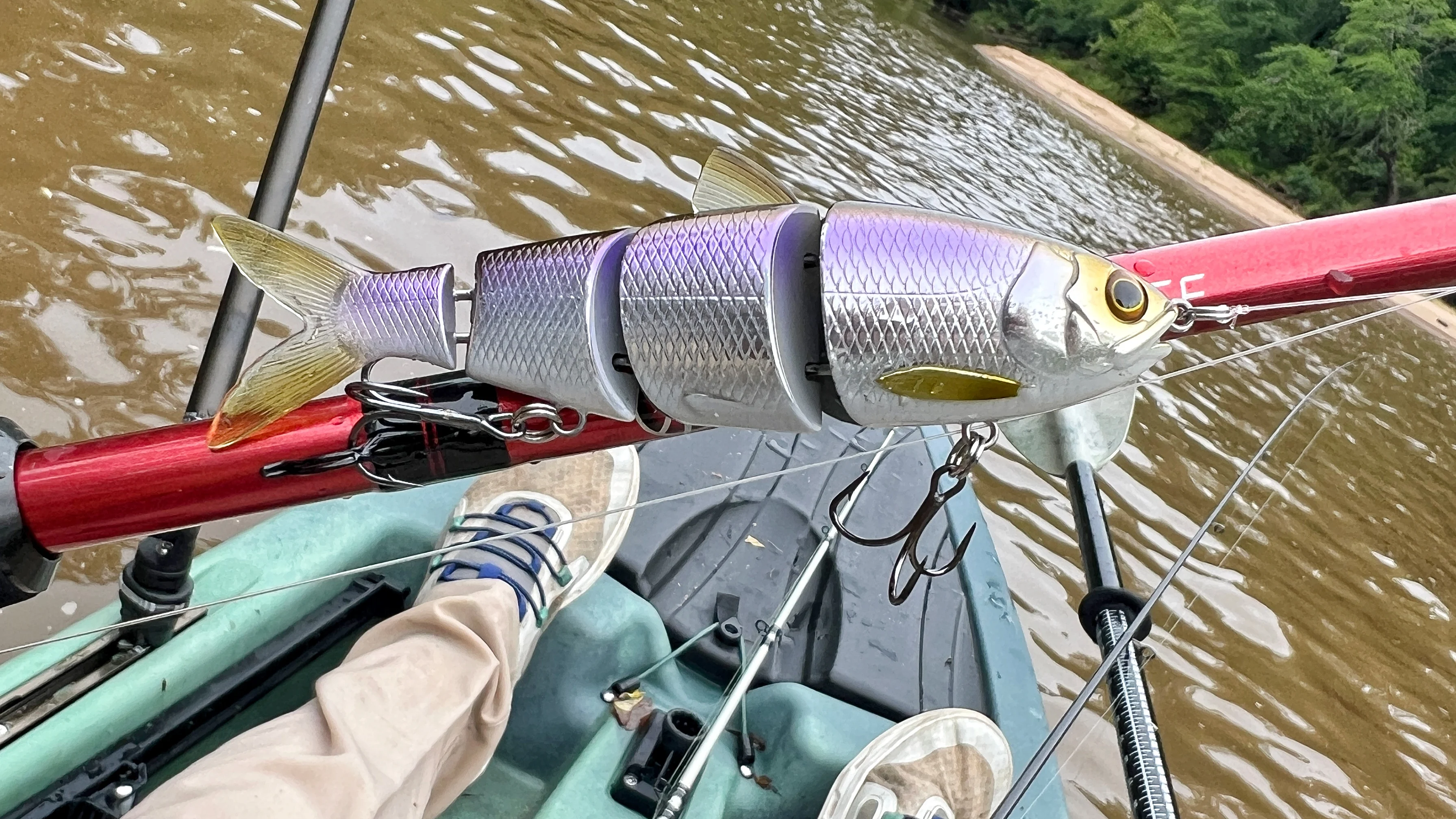
G-Ratt Baits Executioner Top Hook Swimbait
Specs
Length: 6 inch
Weight: 1.9 ounces
Price: $17.99
The G-Ratt Baits Executioner is another new favorite of mine for 2025. This bait has one big bold hook coming up out of the top with a weighted harness buried within the front half of the bait. At first glance, you might be reminded of the popular Megabass Magdraft, and rightfully so—the profile looks very similar. But that's where the similarities end. For starters, the Executioner has the big top hook as opposed to a harnessed treble hook and the Executioner is a good bit heavier than the Magdraft, Berkley Cull Shad, and other baits in this size and shape.
The heavier weight (2 ounces) makies this more of a deep water bait. Though I fished it pretty shallow in the testing, this bait is really designed for 12 to 25 feet of water. It has a fantastic action at any speed and a hook strong enough to pull a truck out of a ditch. Anglers who target ledges and those fishing herring runs will fall in love with this bait.
FAQs
Q: What color swimbaits are best for dirty water?
While the majority of swimbaits are designed for clear water situations, you can certainly still catch fish on swimbaits in dirty water. Glide baits, for instance, work well in stained to muddy water because they have good movement, and bass can feel them as they pass by. Bright colors like bone give off the most glow, making these baits easier for the bass to locate in muddy water situations.
Q: What time of year is best for big swimbaits?
Big swimbaits can be used year-round to catch bass, you just have to modify your bait selection and approach to give yourself the best chance to reach the fish where they are. For example, a large topwater swimbait like a Gambler Big EZ works best around shallow vegetation during the spring because it’s weedless and the bass are aggressive. A big Huddleston is better in the winter when the bass are deep and sluggish. A glide bait works best in the spring and fall when the bass are somewhat aggressive and in the shallow and mid-depth cover.
Q: What size swimbaits are best for largemouth bass?
Largemouth bass will eat swimbaits that are only a couple of inches long all the way up to baits that are bigger than themselves. I’ve caught bass that were around 10- to 12-inches long on a 9-inch glide bait before. While big largemouths can be caught on small swimbaits, they typically respond better to larger baits. A 6-inch harnessed swimbait like the Cull Shad and a 7-inch glide bait like the SPRO Chad Shad are both great baits for catching largemouth from 12 inches up to 8 pounds.
Go Big or Go Home
Sometimes it’s best to match the hatch with swimbait selection, like using a 3.3-inch Keitech for spotted bass relating to threadfin shad. However, the beauty of swimbait fishing is that it can be a go big or go home kind of deal. So don’t be afraid to go with something gaudy. Even if the bass in your fishery don’t have a lot of natural forage present in the 6- to 8-inch range, the big ones are still likely to respond to a bait that they believe to be a big, easy meal.
Why Trust Us
For more than 125 years, Field & Stream has been providing readers with honest and authentic coverage of outdoor gear. Our writers and editors eat, sleep, and breathe the outdoors, and that passion comes through in our product reviews. You can count on F&S to keep you up to date on the best new gear. And when we write about a product—whether it’s a bass lure or a backpack—we cover the good and the bad, so you know exactly what to expect before you decide to make a purchase.

